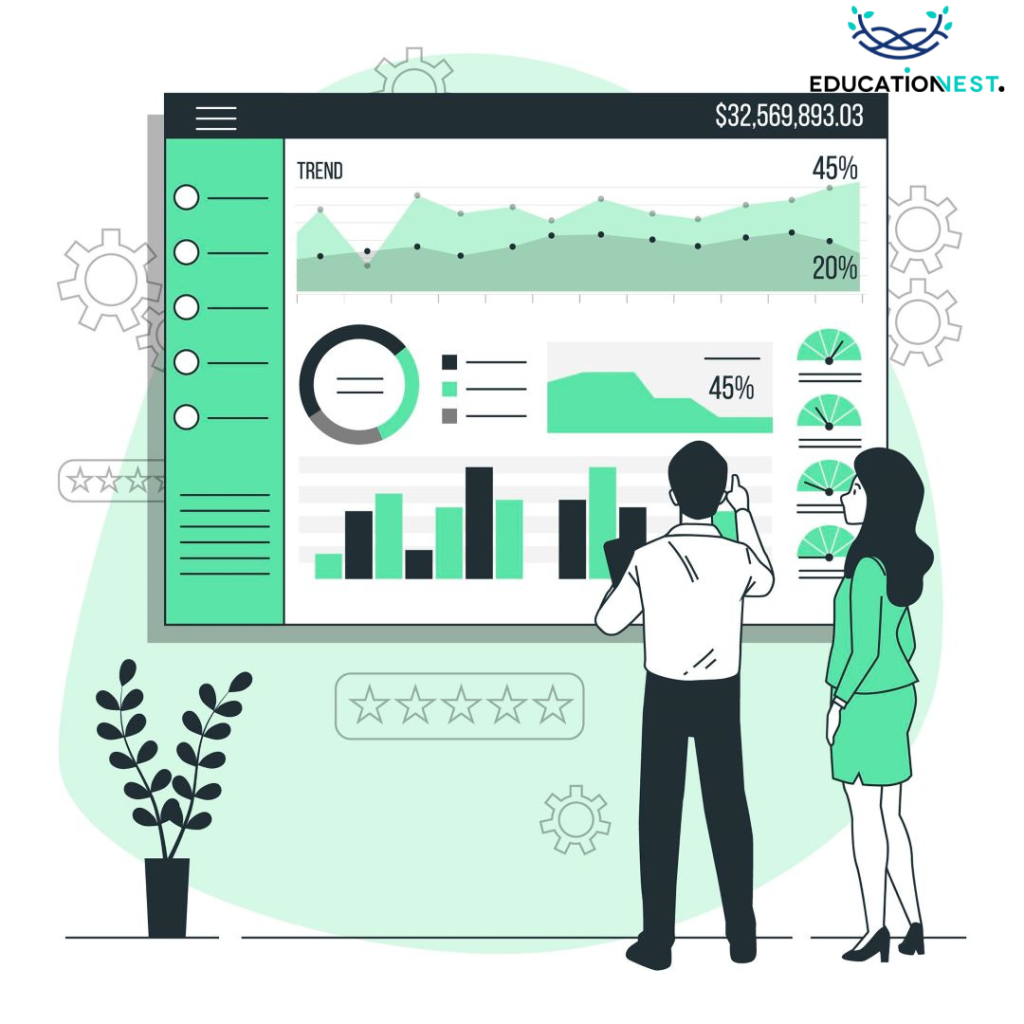From self-driving cars to product recommendations, machine learning is revolutionizing the world as we know it. However, even the most advanced algorithms rely on quality data. That’s why data preprocessing in machine learning—including tasks such as data cleaning, preparation, and visualization—can make or break model success. Flawed or messy data sets lead to unreliable results. But structured, clean data unlocks meaningful patterns for machine learning algorithms to uncover accurate insights.
This ultimate guide will clarify exactly why data preprocessing is the crucial first step in building robust machine learning models. We’ll explore common data issues that impact performance and walk through techniques to detect errors, handle missing values, fix inconsistencies, select optimal features, transform attributes, and visualize data. With the right data preprocessing, your models can efficiently learn from patterns and make predictions that transform decision making. Let’s dive into the essential data preprocessing tasks that allow machine learning algorithms to shine.
What is Data Preprocessing?
Data preprocessing means getting raw data ready for machine learning models to use.
Feeding messy, unorganized data directly into models causes problems—unreliable predictions, low accuracy, biases. Data preprocessing fixes these issues so models perform their best.
You can think of raw data like rough metal and data preprocessing as the process to melt it into pure gold. Data preprocessing removes:
- Missing values – gaps in the data
- Outliers – points that skew the analysis
- Duplicate entries – double counts
- Irrelevant features – unnecessary details
- Poorly formatted data – that algorithms can’t read
By cleaning, structuring and transforming, raw data becomes high-quality and valuable for machine learning.
Data preprocessing uncovers hidden patterns so models can easily spot signals. It organizes scattered points into tidy tables to reveal relationships. The cleaned data paints a clear picture for machine learning models to analyze.
While advanced models like neural networks get more attention, data preprocessing is the crucial foundation upholding everything from classification to prediction. Without proper data preparation first, machine learning models struggle. But robust data preprocessing smooths the way forward.
Understanding Data Preprocessing in Machine Learning

Machine learning models are like highly skilled professionals—they require quality materials to do their best work. Data preprocessing gives them what they need to excel.
Think of a master chef presented with a disorganized pile of subpar ingredients versus a tidy arrangement of fresh, premium foods. The meal will turn out much better with the latter.
Similarly, machine learning algorithms like neural networks thrive when served clean, consistent training data rather than a jumbled mess of errors, noise and redundancy.
The key tasks of data preprocessing equip models for success:
Data Cleaning: The algorithmic equivalent of washing dirt off vegetables. Detects and fixes issues like missing values, outliers and errors to improve data integrity. A model can distinguish real patterns better without specks of bad data muddying the waters.
Data Integration: Combines data from multiple sources, formats and systems into one unified picture, like mixing ingredients from different aisles of a grocery store. Prevents a myopic view limited to isolated data silos.
Data Transformation: Just as a blender purees solid ingredients into liquid form, transforms data from original structure into a specific format for consumption. Puts data into shapes digestible for particular algorithms.
Data Reduction: Compresses data volume while retaining the overall meaning, like condensing broth into a rich concentrate. Critical for streamlining massive data.
Data Discretization: Converts continuous numerical attributes into distinct groups or values. Categorization helps algorithms interpret the significance of features.
With unprocessed data, machine learning analysis may stall like a dull kitchen knife trying to chop dense vegetables. Data preprocessing makes everything fluid and functional. It empowers algorithms to find hidden connections that would have been buried among the raw debris.
The result? Machine learning models can deliver success to the highest specifications—predictions with outstanding accuracy, classifications of nuanced precision, and decision intelligence exceeding expectations. Data preprocessing provides the ingredients.
Defining Data Cleaning in Machine Learning
Data cleaning transforms messy data into pristine condition for machine learning. Also called data cleansing or scrubbing, it removes anything that distorts the accuracy of analysis.
Real-world data resembles vegetables fresh from the garden—it takes diligent washing to reveal the nutritious core. Data cleaning peels away outer layers of dirt, debris and defects using techniques like:
Handling Missing Values:
Fill gaps caused by lost data with estimates or reasonable substitutions. Removing holes altogether presents a more complete picture. Like replacing missing puzzle pieces so the big picture emerges.
Identifying Outliers:
Find and address atypical points that skew the data landscape. Outliers are those unusual vegetables growing much larger or smaller than the rest. Flagging anomalies prevents misleading perspectives.
Fixing Incorrect Data:
Detect inputs that got erroneously entered and amend values as needed. One typo can throw off an entire machine learning recipe. Careful data cleaning catches seasoning measurements that should read teaspoons instead of tablespoons.
Removing Duplicate Data:
Eliminate copycat data points that overemphasize patterns. Too many duplicates can skew relationships like extra chili peppers overwhelming dish flavors. Unique data carries more balanced significance.
With dirty data blinding models, predictions suffer from distorted perspectives and insights fall flat. But thorough data cleaning removes obscurities so machine learning algorithms can clearly perceive key patterns and trends needed to deliver value.
Also Read:
How does Machine Learning Helps With Healthcare: An Informative Guide
Exploring Data Preparation in Machine Learning
While data cleaning addresses surface-level issues, truly algorithm-ready data requires comprehensive preparation. Proper data preparation is like preheating an oven and greasing baking pans—essential tasks that set up success.
Key elements of data preparation include:
Feature Selection: Choose the most relevant input features to avoid overcomplicating and diluting the analytical recipe. Too many wildcards change flavor profiles. Pare down to optimal attributes.
Data Transformation: Convert data structured for human interpretation into machine-readable formats. For example, condense categories like red, green, and yellow peppers into a single “pepper” variable.
Data Resampling: Balance imbalanced training data where certain classes dominate datasets. Upweight underrepresented groups so models learn meaningful differences and are not biased by sampling errors.
Feature Scaling: Use normalization techniques to uniformly distribute all data within a small specified range, often between 0 and 1. This formatting allows equitable model comparisons between uneven attributes.
Feature Engineering: Design and generate new features that better expose meaningful data insights to algorithms. Making a pesto sauce calls for hand-processing pine nuts, basil, garlic into a new substance unearthing hidden flavors.
With unrefined data, machine learning analysis can only scratch the surface. But diligent data preparation puts information synthesis on autopilot. It transitions manual messiness into structured uniformity that models intuitively understand. Algorithms then manifest their full analytical potential and maximize value extraction.
In essence, data preparation grants machine learning models a complete perspective with balanced focus where crucial patterns are vividly illuminated among normalized data flows. Their unique intelligence activates to unlock transformative automated insights at scale.
What is Data Visualization in Machine Learning?

Data visualization means creating visual representations of data. It transforms numbers and statistics into more intuitive charts, graphs, and images. Visualizing data is extremely useful for machine learning. Plots allow us to easily spot trends and patterns that would be hard to see in tables full of numbers. Different types of visualizations serve different analytical purposes:
Scatter Plots:
Plot each data point on x and y coordinate axes as dots. Lets you assess if variables relate to each other. You can spot groups, trends, and outliers emerging visually.
Line Graphs:
Connect data points over time. Ideal for observing trends clearly. Gain insight into historical data flows.
Heat Maps:
Color code values within a table-style layout to emphasize patterns. See which numerical ranges dominate datasets through colored clusters.
Bar Graphs and Pie Charts:
Summarize overall features concisely. The lengths or slice sizes represent total frequency or quantity share of categories.
In machine learning, data visualization enables simpler human understanding of complex datasets including hidden insights algorithms uncover. The maxim “a picture is worth a thousand data points” rings true. Effective data visualizations also allow data experts to assess and enhance data quality through the preprocessing stage. Flaws become plainly visible. Decisions can focus on areas where visual tweak impacts are evident before fine-tuning machine learning model performance.
Conclusion
Thorough data preprocessing is key before applying machine learning to solve real-world problems. Structuring inconsistent, noisy or incomplete raw data can directly boost model accuracy. By cleaning, transforming, integrating, reducing and visualizing data, you allow machine learning algorithms to efficiently find hidden insights to drive decision making. Data preprocessing is an iterative process but necessary time investment to enhance reliability and performance of models.
